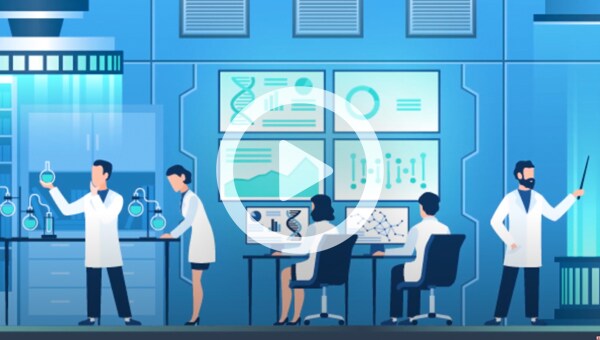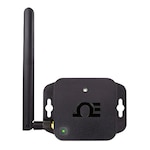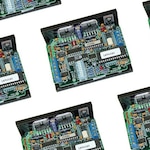#remotetogether
We enlisted a team of engineering experts to answer some of the most important questions you might be facing as you look at implementing remote monitoring. Have any additional questions? Let us know by answering this 3-minute survey.
Why should remote monitoring be part of my response to COVID-19?
Remote monitoring eliminates the need to be on-site, and therefore it plays an integral part during disruptions that prevent your team from being close to the application. With all businesses are going through some form of disruption and reduced personnel capacity, consider the following benefits of including remote monitoring in your response plan:
Keep operations running: organizations may have expensive products or processes that need to be monitored closely. .
Reduce personal exposure: The process continues to run and be monitored without manual checking and logging of information. This capability is vital for any manual monitoring since it reduces personal exposure - taking the existing data and making it available where you are, instead of where the system is physically located.
Improve employee safety: process sensing comes in all shapes and sizes – including some unusual applications. Monitoring remotely reduces employee contact with demanding/harmful conditions – that go beyond the current pandemic processes with hazardous gases or byproducts, high temperatures, extreme noise, etc.
Keep informed with real-time notifications: most remote monitoring also includes alarming functions, so a timely response to an error condition can lead to improved efficiency, reduced waste, and improved products. The recipient list can be as broad as desired, accounting for the unavailability of one or more team members.
Safeguard valuable data: remote monitoring also typically provides long term cloud-based storage that addresses many regulatory needs as well as opening the possibility of reviewing the data to determine both positive and negative trends. Moreover, cloud-storage reduces the need to tamper with your existing IT infrastructure to make a solution work.
Plan for optimized capacity: remote monitoring can maximize the number of employees who can work remotely, complying with social distancing guidelines.
Plan for the future: this current disruption has pushed your teams to think about smarter ways to either be prepared for outages or increase the efficiency of organizations in anticipation of future cost-reduction pressures. The payback for these is not only during pandemics like COVID-19, but also regularly, as manual work is reduced. Remote monitoring can reduce costs associated with product spoilage, maintenance, operational efficiency, and product integrity. It leads to short term 'proactive' responses in terms of immediate alarming as well as longer-term proactive responses through data trends and analytics, which are only possible if reasonably large data sets are compiled through automation. It also allows management to retain a sense of 'control and understanding' where they have been directed to 'work from home' while principal operators are on site.
___
How should I evaluate the sensing part of my processes when planning for continuity?
A continuity plan should capture instructions for maintaining operations in the event of significant disruption – sensing solutions included. Consider looking at sensing and monitoring from the following angles:
Sensing redundancy: some critical parts will require redundancy. In the event of a disaster or a more extensive disruption, maintenance and replacements might be delayed. Make sure to list which processes are critical enough to have sensing and monitoring redundancy.
Ask yourself: which part of which process can I stay without data on?
Process sensing map: understand which parts of your process are instrumented today and consider whether they would be different in case of a disruption/disaster.
Ask yourself: in the event of a disruption, would I need to measure or sense anything else – process or application?
Data storage: major disruptions could also lead to loss of critical process data. Evaluate how your process limits, historical data, and critical data is being stored – providing redundancy for the essential pieces of information.
Ask yourself: which data must I keep can I not consider losing and how am I storing it?
___
What are the applications most commonly suitable for remote monitoring?
All processes are subject to monitoring – and remote monitoring applies to all industries, but are especially prevalent in the following:
Food processing: FDA requirements for data storage drive an increasing need for remote monitoring with cloud storage. Moreover, common risks require alarming, such as spoilage if temp/humidity is out of range.
Storage:materials must often be maintained at certain conditions – temperature, humidity, and light levels are the most common. Remote monitoring allows you to not only confirm and watch but also to be notified should its levels deviate from expected ranges.
Processing and distribution: monitoring freezer/refrigerator temperatures, tank or process line temperature, and pressures are all things that can quickly be done remotely.
Development and testing: R&D/Universities/Testing labs are potential users of remote sensing and monitoring. Test technicians and Engineers can check the results of a test in progress, monitoring the key parameters and outputs remotely.
Machine or process status: machinery or processes that operate in hazardous environments or are sensitive to changes in the environment are candidates for remote monitoring. For example, processes susceptible to water damage.
___
What are the immediate benefits of adopting remote monitoring?
Social distancing and the inherent employee safety and well-being are top-of-mind for businesses across the world. At the same time, these businesses need to keep running. The ability to monitor from home and increase social distancing compliance is currently the most relevant immediate benefit from adopting remote monitoring.
Moreover, immediate benefits include team efficiency: not commuting to a location just to check on a test/process, for example.
As an example, consider microbreweries. Operators check and record the temperature and pressure of their tanks daily. With remote monitoring, they can set the interval for recording electronically and monitor remotely.
Additional benefits include:
- Compliance to record-keeping regulations
- Reduced costs (over manual)
- Improved accuracy (over manual)
- Alarming and notifications
- Improved visualization
- Faster response to incidents
___
Which are aspects that indicate an application could immediately benefit from remote monitoring?
Look for applications and processes that have a good intersection of importance, ease of transition, and improvement opportunity. A process is a good candidate if:
It is currently monitored manually: processes that require manual and constant logging of data, or visual inspections can provide immediate benefits in time-saving and efficiency. Manual recording from old "dial" type gauges that have no electrical output is a good example. Preferably some process or condition that is already monitored so there is a clear understanding of what is being observed, why it is being followed, and how to measure a 'successful' deployment.
It generates essential data that satisfy regulatory requirements: specific industries, certifications, and regulations require regular and constant monitoring of information. Having such data flowing directly into cloud data storage, easily accessible, can help with regulatory compliance.
The cost of missing an out-of-range condition is high: processes for which running outside of the norm will have severe impacts for quality or safety are essential to be monitored remotely. Alarms and notifications received by the right people at the right time accelerate the response actions that can minimize damage or prevent further damage..
___
What challenges should I anticipate when adopting remote monitoring?
A successful project or transition involves anticipating and mitigating any risks. These are some of the most common challenges and solutions when adopting remote monitoring:
Have well-defined goals: realistic goals, with measurable results, are essential to determine if the success of your project.
Manage scope of work: avoid 'boiling the ocean' or radically changing the existing process. Take a "walk before you run" approach: start with a process that lends itself to monitoring, then slowly expand capabilities to automate the response. This allows a successful first project from which others can grow and avoids investing in an unrealistic, 'revolutionary' plan that fails due to complexity.
Plan for a team effort: depending on the solution specified, it may require a small team to get it up-and-running. Some systems offer plug-and-play capabilities that reduce installation time. Depending on the complexity of your project, it may require physical adjustments to your application, such as new fittings bring the experts into the process early on.
Involve IT: your IT department may need to be involved in approving the solution or system you are putting in place. It is essential to consult with your information technology team to review the new systems and protocols to identify and implement and changes to the wired and/or wireless network
___
How much will it cost?
It can vary a lot, depending on the scope of your initial project. Some temperature sensors can be had for $40-$100 each. An IIoT ecosystem can be ordered for $500-$1000, including 3-5 smart sensors, a gateway, and cloud storage.
Back to top___
How long will it take to get it running?
It mostly depends on the size and complexity of the process that you want to upgrade to remote monitoring. A simple system (ex: measuring room temperature and humidity) could be up and running in a matter of hours.
Back to top___
Which steps should I follow to migrate to remote monitoring?
Once you decided on a specific process, it is time to put a plan in place. As we mentioned, it would best to focus on a process that is currently being measured manually.
Project value: confirm the value of the project by determining the cost of monitoring the process as is, and quantify the risks of leaving the current state in place. Annualizing your projections is a great way to advocate for buy-in if needed.
Determine your data needs: determine what data needs to be collected, whether storage is required, and whether some form of alarming is required.
System integration: finally, focus on how to integrate the system. For data that is currently manually collected, incremental wireless sensors are typically the best approach as they have low installation costs, are generally non-invasive and have no impact on any existing processes. For data that is automatically-collected, it may be possible to tap into the existing automation subsystems. Still, the lowest risk is to add incremental sensors wherever possible to avoid any disruption to the current control system.
___
What improvements can I make to my existing automated application?
Determine which data needs remote monitoring and which is not currently being collected: most automated systems collect data to perform a specific task. An example is bottling operation, which detects a) bottle in place, b) liquid at the correct temperature, c) cap installed correctly. Of the 3, only the temperature may need to be remotely monitored. The other 'unmonitored' conditions may include environmental temperature and humidity.
Collect data to inform future improvements: just because something runs "automated" doesn't mean that it's appropriately documented. Keeping an electronic historical log of crucial process variables will ensure that you have a historical "golden record" for when component/material/subsystem changes/fails.
Implement alarms that notify personnel when a variable goes out of range: in essence, remote monitoring can help you ensure that an automated system is running correctly in a factory "lights out" situation, such as run overnights, weekends, and pandemics without anyone at the site.
___
How can I minimize the risk of downtime with a remote monitoring solution in times of high demand or low personnel?
Having remote monitoring will minimize downtime with fewer persons (especially if replacing manual monitoring). By centralizing data, it widens access to people who can take the right steps when problems occur. As demand increases, the process has been automated, so no additional burden is put on personnel for the monitoring. This automation is inherently scalable since no 'skill set' needs to be transferred.
Back to top- Why should remote monitoring be part of my response plan to COVID-19?
- How should I evaluate the sensing part of my process when planning for process continuity?
- What are the applications most commonly suitable for remote monitoring?
- What are the immediate benefits of adopting remote monitoring?
- Which are aspects that indicate an application could immediately benefit from remote monitoring?
- What challenges should I anticipate when adopting remote monitoring?
- How much will it cost?
- How long will it take to get it running?
- Which steps should I follow to migrate to remote monitoring?
- What improvements can I make to my existing automated application?
- How can I minimize the risk of downtime with a remote monitoring solution in times of high demand or low personnel?



